A look back at all the guitar amps I’ve owned over the years, each with its very own story. What’s your Guitar amp History?
Flyspec headphone amp
Where it all started. Was it even a guitar amp at all? Plugged into my first ever guitar (a Hondo Strat). Before I’d even discovered gain, it merely amplified the guitars clean tone.
Laney Linebacker 30
My first 1×12 combo amplifier but hardly a step-up from the flyspec as the overdrive channel was so bad.
Vox Ac30 (1960’s)
Probably the most iconic guitar amplifier ever made, particularly for Queen fans, as I am. This was the real deal with the fabled Celestion Blues. It came into my possession from a bandmate and I suppose mentor at the time. Maybe he was passing it onto me after a lifetime of gigging? Who knows. What I did know was that I now had the ultimate guitar amplifier in my hands.
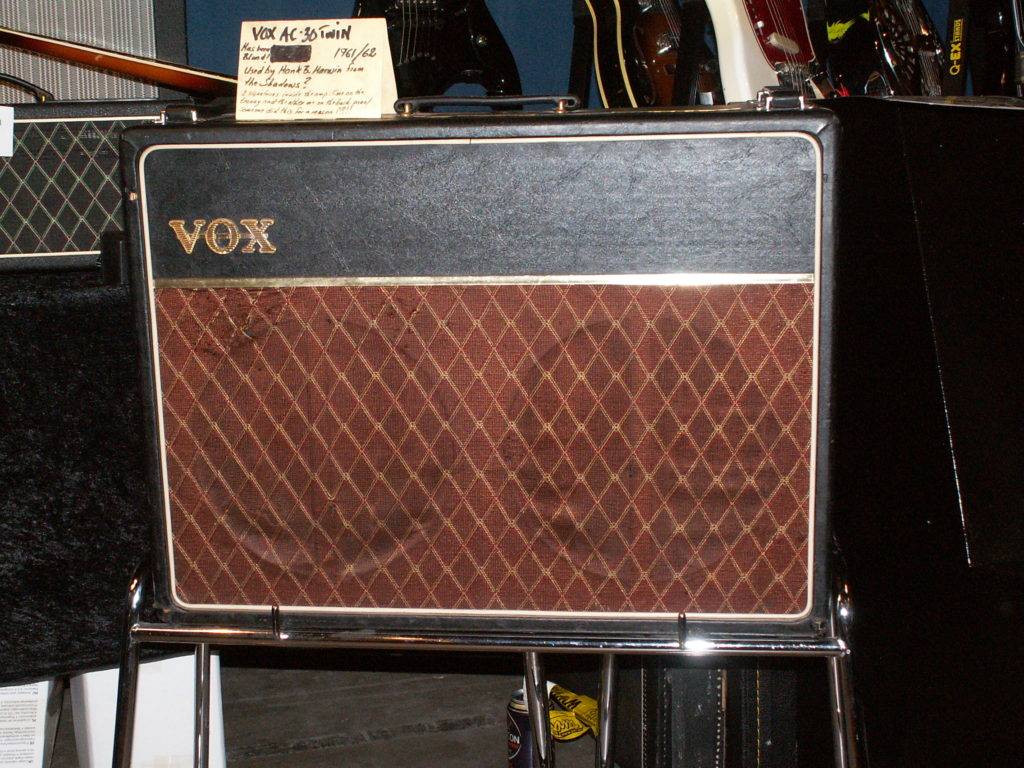
But the sad thing was, I would never hear it as it was intended, a full tilt with the power valves cooking as it was just far too loud. My overdrive pedal knowledge was still in its infancy at this time too, so, although I had an amazing clean tone, getting a workable drive tone out of it proved to be a frustrating challenge, even with the now sought after original Marshall Guvnor overdrive in the front.
Oh, and it was back-breakingly heavy, and would break down frequently, especially when making frequent trips up stairs and on buses like I was doing at the time.
Laney LC15R
My first ‘practice’ guitar amp and experience of a dedicated valve-driven overdrive channel. An amazing amplifier which started off my love-affair with Laney in general. I loved the dynamic, cascading gain it produced and revelled in it during my regular sessions of trying the learn Queens Greatest Hits 1 and 2, ‘off the record’ tab books.
My stand-out memory of the Laney was when, one day, I decided to use it in place of my Marshall Guv’nor overdrive pedal to drive my Vox AC30. The best tone I ever achieved by a mile, and absolutely nailing the solo tone on ‘Live Forever’ by Oasis.
Marshall VS100R

When I started gigging semi-seriously, I started to take a hard look at the practicality of the Vox AC30. It just wasn’t manageable or reliable enough. Phil, the other guitarist (and original owner), was getting some amazing tones out of a new hybrid amp, the Fender Performer 1000 which convinced me it was time to let go.
It was a tough break up….
First of all I had to get the behemoth of the Vox AC30 from the practice room storage onto a bus. And then from the bus to the guitar shop, not even knowing if I could exchange or sell it on.
Luckily this AC30 had castors, so when I eventually made it over the cobles of Newcastle back-streets to the shop, I was surprised to find the vibrations hadn’t killed it for good.
Of course, the guy in the shop fell in love. ‘Instant Kinks’ he proudly exclaimed as he cranked it up close to max, distorting it beautifully to an appreciative audience. The best I’d ever heard it sound, but by now it was too late, I’d made my decision.
… And that’s where the Marshall Valvestate VS100R came in. As the guy was drooling over the original 60’s plug (still intact). he offered me a brand new channel switching VS100R as a straight swap. Madness? Well, this wasn’t the first time I’d trade in gear porn for the sake of practicality.
So, for the foreseeable future at least, the 3-Channel Marshall VS100R delivered without missing a beat. Ultra reliable, versatile, and with that unmistakably square Marshall push. It give me my start in a real band, developed my playing and taught me about how different gain structures work in a band context. It was more than a match for the Fender Performer 1000, and as such the band ‘Columbia’ did some good things.
I never really missed the Vox AC30.
Fender ROC PRO 1000
I can’t really explain my reasoning on this purchase. Perhaps I just wanted to see how I sounded through the now discontinued Fender Performer 1000, but this ranks as probably the worst guitar amplifier I’ve owned. Noisy, with an ice-pick overdriven tone, an on-off style volume control and a seeming inability to tweak the tone whatsoever. It sort of did one (bad) sound, at one volume (deafening). The clean channel was good, but at the time I had next to no use for one.
Laney TF400
TubeFusion. Laney’s answer to Valvestate. This lump of an amp took things a stage further with around double the number of knobs (horrible things on this amp) and 4 channels.
The thing was, none of the channels sounded any good, no matter how much you tweaked them.
Less tweaking, more playing please?
Marshall DSL401
After ‘Columbia’, I indulged in home recording for while. This was around about time of my Gibson Les Paul Standard acquisition, where I was focussed on purchasing expensive gear for maximum tone.
Not that the Marshall DSL401 was that expensive, in fact it was the cheapest valve guitar amp in the store. But at least it was a valve amp right? From the biggest name in the business.
So there I was. The Classic combination. Gibson Les Paul Standard, Marshall Valve amp, a Tascam 4-track recorder and my imagination.
The Marshall DSL401 had a surprisingly good clean channel, but it was the OD1 channel where the signature Marshall tone was accessed. If the Laney could be described as tweakable and dynamic, this was such an unmistakably classic overdriven tone that didn’t need to be, and laid the foundation for almost a full albums worth of material.
But the DSL401 wasn’t without faults, the OD2 delivered a set amount of boost (+20db) so was useless as a live solo boost. It also ran very hot, causing grave reliability concerns when I started gigging again with a band called Blustar.
Some research revealed horror stories of overheating and unreliability due to the design issue of the valves being almost completely enclosed with no air inlet to cool things down.
In the end, the best recording amp I ever owned had to go.
Marshall AVT50
Still being in love with the Marshall tone, the AVT50 1×12 combo represented the perfect compromise. More reliable valvestate technology but lighter (and exponentially cheaper).
I had a chance to A/B this with the DSL401 and although the DSL did have the edge in a less-synthetic, sweeter sounding top-end, there really wasn’t much in it.
For the next 3 years, I fell more and more in love with it. It would be safe to say my playing peaked with this amp, not just with a gigging stint with Blustar, but with technically difficult auditions for a number of bands including original band Stoneleaf and Heavy load, a local Free tribute.
I had arrived at my sound. Full guitar volume would conjure up musical feedback, but backing off slightly I could get thick rhythm tones too. I liked it ragged, unpredictable, unruly, so that improvisation could spring surprises and lead me in different directions.
Alas , my favourite guitar amp of all-time came to an undeserved end. I found myself in the vacuum of being bandless again,and, for reasons long forgotten, I decided to simply dump it along with all the other unwanted electrical at the the local skip.
Great amp Marshall, I’m so sorry.
Marshall AVT50h
The head version of the above, and my first and only experience of a Marshall 4×12 stack.
Of course, the bottom end sounded like thunder, flapping my trousers and inspiring me to rip up the fretboard.
I never did have anywhere to store it, and the on-stage dispersion drowned out the rest of the band.
Massive fun though!
Laney LC50
The AVT50’s impeachable reliability let me down on only one occasion (a loose speaker connection).This beast of Laney filled the gap temporarily.
This though, like all Laneys, was just too twitchy, making it difficult to set up a tone for regular like gigs, particularly with those easy to knock chicken-head knobs.
It was very heavy, but had a huge sound, an inferior celestion 70/80 speaker, and for me at the time, any valves whatsoever was a worry.
Blackstar HT5
With Blustar resigned to history I got back into full-time recording and my very first dedicated recording guitar amp. It was far too gainy and dark sounding, and although the reviews raved about them, I was left disappointed and chose my BOSS BR-800 over it to record guitar tones.
On one occasion I auditioned for local punk band (The ME-MEs) with just the BlackStar HT-5 and my guitar. Thank god for the line-out!
Vox Brian may VBM1
I just needed to see what the ‘Deacy’ was all about didn’t I? The reality, even with my Red Special guitar at the time, was that it sounded just like any other small transistor amp. Much like the Blackstar HT-5, it was high gain, and very noisy, rendering it useless for it’s very purpose: Recording.
I’d now given up with the Brian May toys.
Orange Rocker 30
I was weak and Orange marketing was strong. It had convinced me I could sound like Wishbone ash, clean but sustaining, The reviews promised the ‘sound in your head’, organicness, individuality.
Those controls and that livery, chunky and bright like a Tonka truck, indestructible. Blustar were getting back together, and I needed to make an impact.
Blustar fell at the second hurdle.
The reality? A furry, almost fuzz-style overdrive. Big, but where was the mid-punch?, the orange tone?, my Wishbone Ash? To me it sounded like they’d bolted a distortion pedal into the chassis.
Was it 70’s? Definitely, but more you’re broken radio 70’s rather than the epitome of organic valve tone.
Laney Vc50
Back at my second home for the fourth time of asking. I saw this for a rock-bottom £200 and just had to own Laney’s Flagship 4-channel, twin speaker, all-valve behemoth, with dedicated footswitch and all.
Second only to the Vox AC30 in weight, this could be described by many as the ultimate amplifier in terms of features and flexibility.
The closest a guitar amp ever got to the Starship Enterprise.
And what a sound it produced too. The ultimate full-spectrum, dynamic ‘Laney’ sound.
But, even at £200. It was just too much amp for me, and was the last ‘proper’ channel switching guitar amp I ever owned. From this point om, I realised that less is definitely more when it comes to guitar amps.
Cornford Roadhouse 30
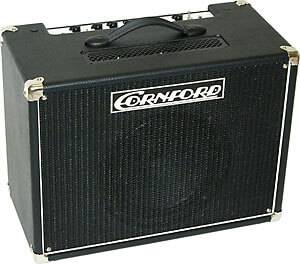
Serious gigging ensued again, and with it, a serious gigging guitar amplifier. My simplest yet, but boy how it delivered!
Read my full review for full details.
Fender Blues Junior

FX loops and cabling were becoming a pain, so could I go simpler (and lighter) still?
You better believe it! Read my full review.
Laney Lc30 Mark I
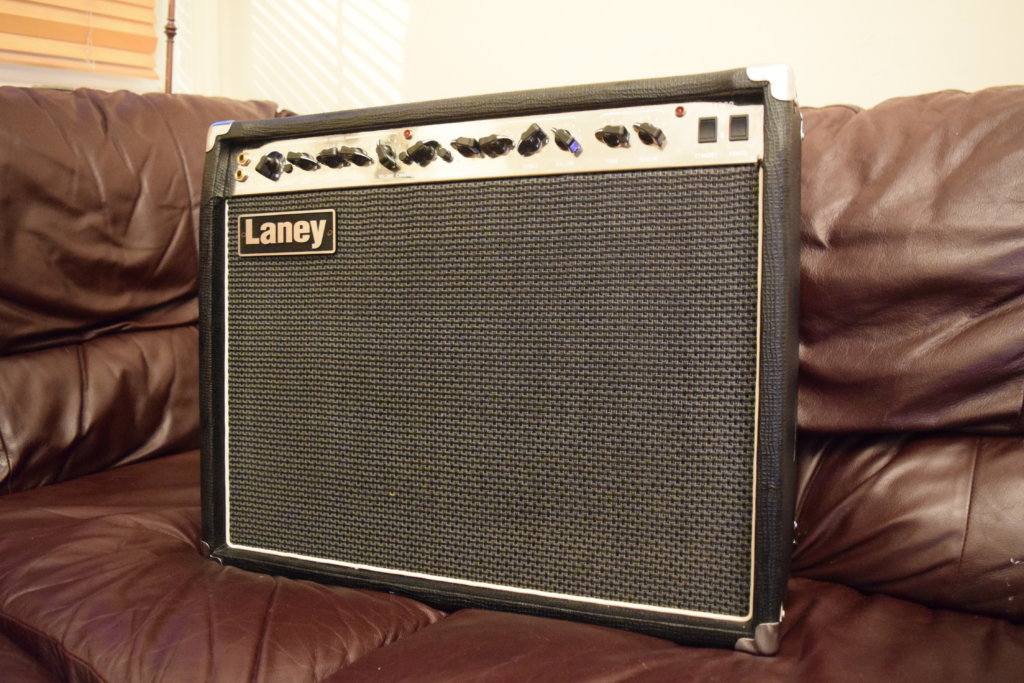
A strange choice to go back to the Laney perhaps, but a needed an amplifier quickly for an audition with The Ritchee Bee band. I didn’t get the job, but the Laney certainly left it’s mark!
Boss Katana 50

Looking back at my guitar amp history, the VOX AC30 had the most Kudos and would have been the most expensive, the Cornford Roadhouse 30 had the best live overdriven sound. Versatility? No contest. The Laney VC50. Recording? The Marshall DSL401, and the one I fell in love with most, the Marshall AVT50. Clean? Hard to look past the Fender Blues Junior III.
So why have I arrived at the Boss Katana 50?
Quite simply it’s the best guitar related purchase I’ve ever made, having the best blend of features.
Here’s my 2 full reviews…..
BOSS Katana 50 Guitar Amplifier Review
BOSS Katana 50 Review. 6 months on.
What’s your Guitar amp history? Drop me a comment below I’d love to hear about them.

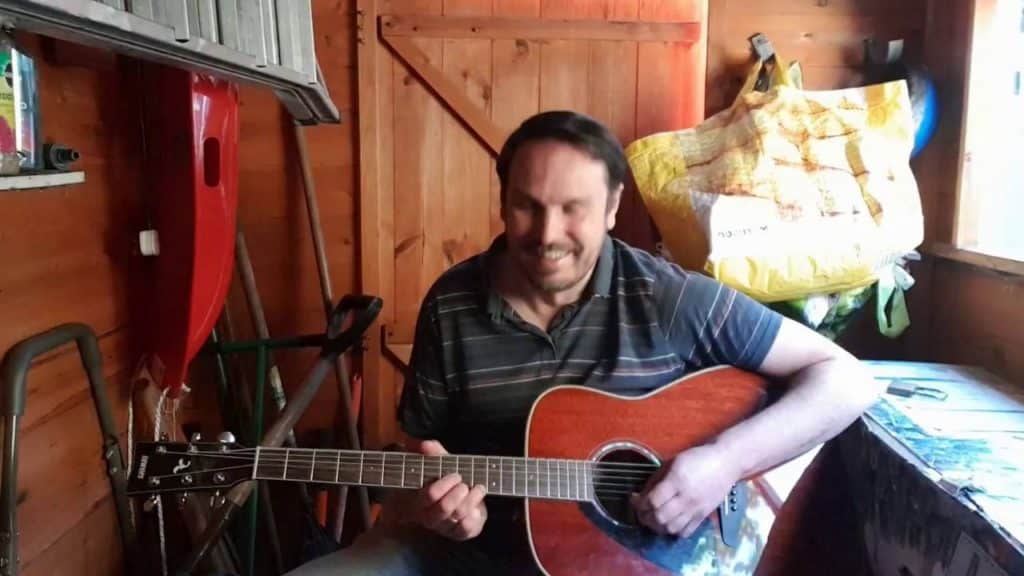
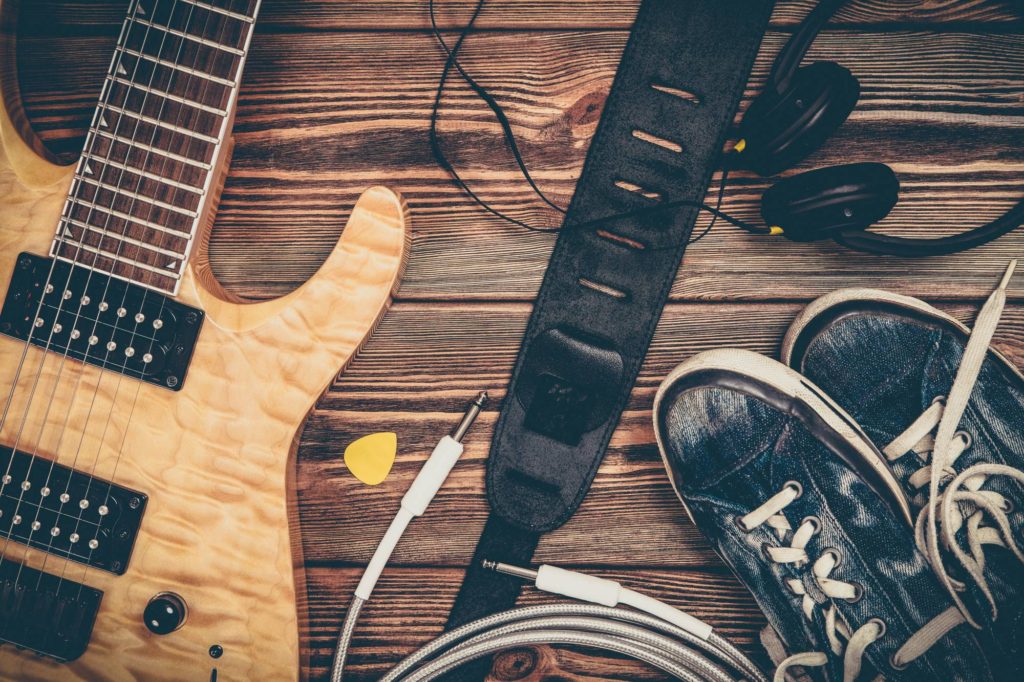

Silvertone head and 2-12 cab 1960s from Sears I was 15 years old, Ampeg Reverb Rocket early 70s, Acoustic 360 bass amp late 60s, Acoustic 400 bass amp pushing 2 18″ Vox Super Beatle cabs, Peavey TNT bass amp early 70s, Ampeg V4 head, ’68 Fender Dual Showman head, Epiphone Valve Junior w/Fromel mod, Vox Cambridge, Fender 2-12 Deluxe, Fender Mustang 3 v.2, current amps: Supro royal reverb and Roland Micro Cube